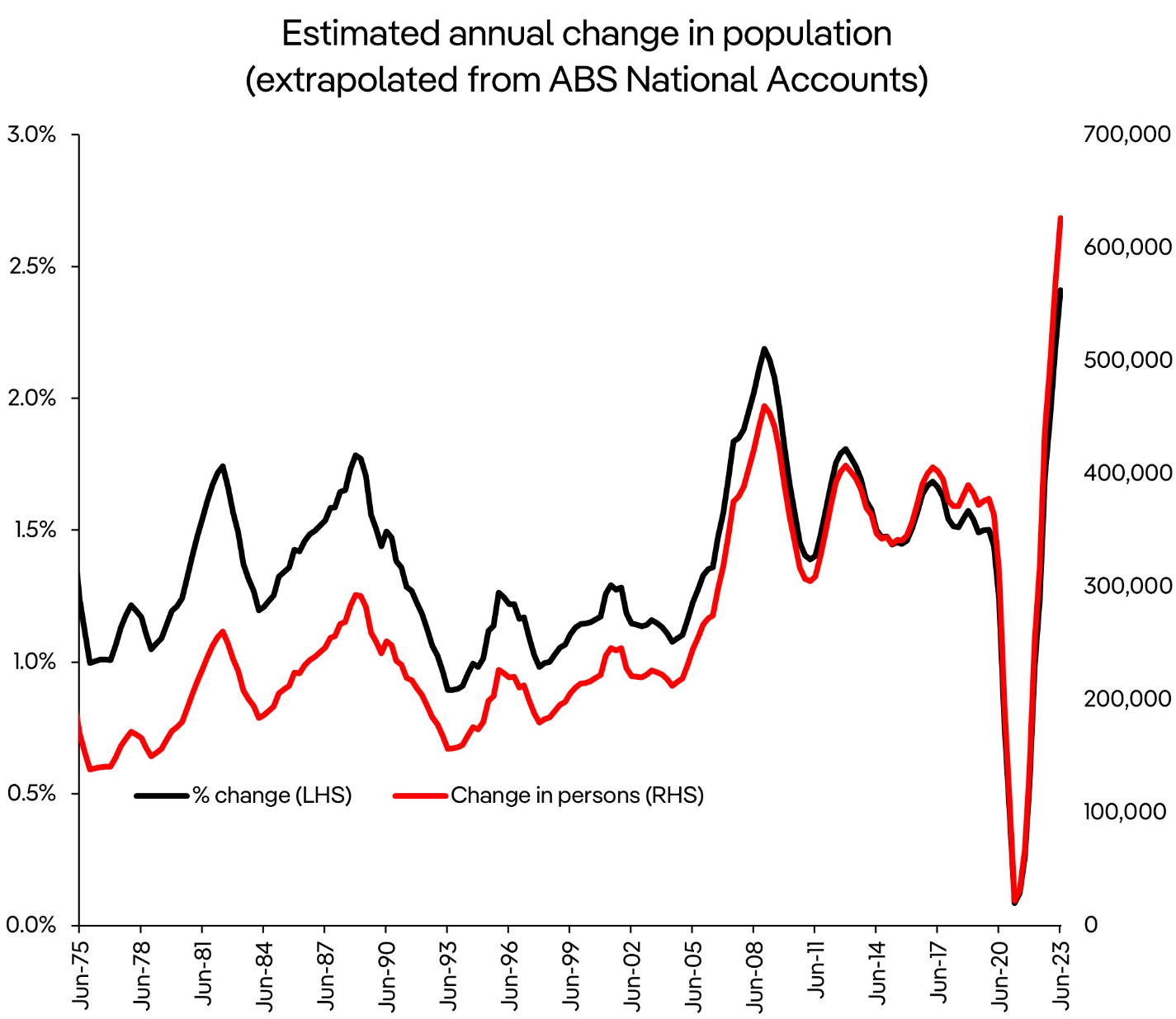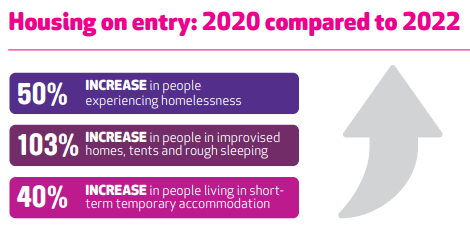Australia’s population is currently growing like a lab experiment via unprecedented levels of net overseas migration:

According to the June quarter national accounts, Australia’s population grew by a record 626,000, driven by net overseas migration of around 500,000:

Source: Cameron Kusher (PropTrack)
The impact on Australia’s rental market has been vicious, with the rental vacancy rate falling to an all-time low of just 1.0% across the combined capital cities:

Source: CoreLogic
The results are predictable, with more Australians being forced to live in group housing and homelessness soaring.
Flatmates.com.au, the nation’s largest share house website, has seen a near doubling of people seeking share housing.
National Shelter also reported that there has been a 50% rise in homelessness since 2020 and a 103% increase in people living in “improvised homes” and “rough sleeping”:

A new trend is emerging with Australians aged in their 30s and 40s moving into ‘granny flats’ built in their parents’ backyards:
“At the age of 44, Mike Coates is flipping a stereotype and moving into a granny flat in his mother’s suburban backyard”.
“His situation speaks to a broader trend in Australia, where an ongoing rental crisis and rising property prices are pushing people across many demographics into share housing, house-sitting and secondary dwellings”.
“Mike’s story is not isolated”.
“The company that sold his mother the $150,000 dwelling has been going for 20 years. In the past two, its customer base has noticeably changed”.
“The granny flat is no longer just for the granny,” Matt Chapman from Granny Flats and Cabins Victoria says”.
“We’ve been building a lot more for the kids coming back and the in-laws.
“Due to, obviously, rent prices going up.”
“Matt believes that, as well as escaping high rents, younger people are also building in their parents’ backyards because owning their own property is out of reach”.
CoreLogic’s head of research, Eliza Owen, warned that the housing situation will likely worsen amid record net overseas migration:
“There’s going to be some pain as we continue to see strong flows of net overseas migration”, she said.
The reality of the situation is that housing demand via population growth is far outstripping the nation’s ability to supply housing, as illustrated below:

The solution, therefore, requires the federal government to stem the flow of migrants to a level that enables the supply of housing and infrastructure to catch-up.
Sadly, by running the biggest migration program in history, the Albanese government is making the housing crisis worse every day.

